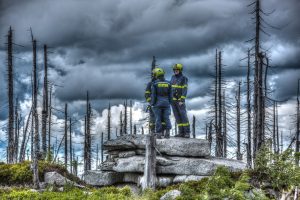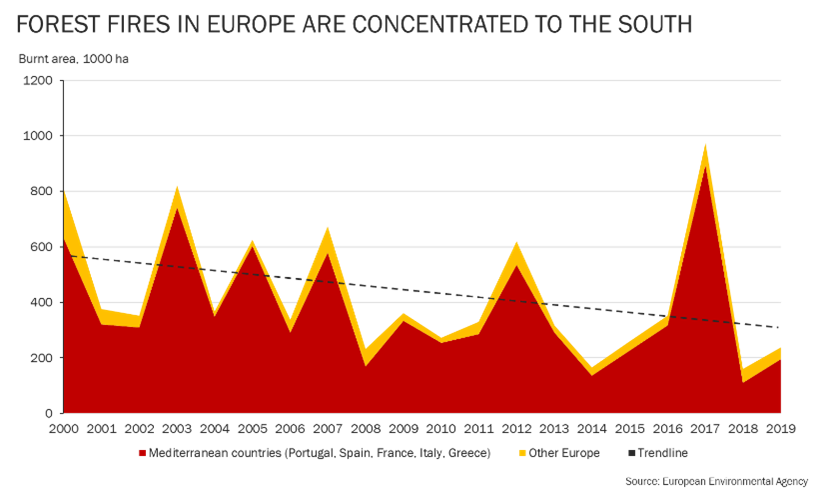A warming climate intensifies the frequency and augments the scale of large wildfires – sustainable forest management can hamper the damage
Wildfires have always been commonplace in areas with dense vegetation or prolonged dry season. However, wildfires are reported to get steadily worse: lasting longer, increasing in quantity and length, and doing more damage, both environmentally, economically, and socially. Techniques to fight them have improved little over the past decades.
A warming world promotes wildfires
Fires can be sparked by lightning or megadrought but are often human induced. However, only a small share cause extensive damage, so called extreme wildfires, and develop beyond human control. Most fires are harmless and set intentionally to clear land for other uses or to manage the forest and other foliage, and lamentably often, by arson.
They can, nevertheless, be problematic from a climate perspective. In the summer of 2021, it was reported that the Amazon rainforest has started emitting more CO2 than it absorbs. Most emissions are result of fires and deforestation, which release both carbon dioxide, methane, and ashes. This creates and auto-alimenting negative spiral: fewer trees mean less rain, more severe droughts, and lengthened heatwaves.
Hot and dry conditions turn forest into kindling, which promotes extreme wildfires. The same phenomenon is occurring in various places globally, and a warming climate further intensifies this vicious cycle. However, when burnt areas are left to regrow and consequently sequester carbon, the effect of wildfires normally becomes nearly carbon neutral over time.
The impact of wildfires on wood availability
While a warming climate can increase wood availability in specific geographies through increased mean annual increment, wildfires can put downside pressure to wood availability together with other climate induced risks such as damage created by storms and pests.
The wildfires in the Mediterranean region, as in the EU, have decreased over the past 20 years. Increasingly effective fire control efforts and cross-border cooperation are to thank for the development, alongside improving forest management. However, the risk of extreme wildfires has spread from the Mediterranean towards central and northern Europe as a result of hotter summers and lengthened arid periods.
The impact of wildfires on wood availability has historically been small in Europe. Damage has been limited mostly to the Mediterranean countries, where they have always been commonplace and relatively constant in size. Recent events in Sweden and the Baltic countries, as well as Russia and Canada, underline the importance of forest owners’ long-term commitment to sustainable forest management in ensuring consistent global wood availability.
The role of active forest management in fighting forest fires
Extreme wildfires are not only a result of changing weather conditions, but i.a. urbanisation and policy decisions regarding land use. The focus in fighting fires has had a strong emphasis on suppression efforts during the past decades.
Yet, the importance of sustainable land and forest management should not be underestimated. Through creating buffer zones, setting controlled fires during colder season, and improving data collection and monitoring, promising results have been achieved in countries like Finland and Portugal, while over-protection of natural forests can have detrimental consequences.
Aside from the degrading climate effects of fire, it has many restorative properties on ecosystems. Clearing away dead underbrush, restoring nutrients, and enabling reproduction of certain species, fires play a pivotal role in active forest management and biodiversity conservation.
So, does climate change induce more forest fires or vice-a-versa? All we know for now is that these two are strongly interlinked and both are caused by a myriad of interconnected factors.
Related content: Loss of biodiversity and habitat (article on Forest and bio-based industries – a part of the solution in mitigating the global environmental crisis)
On the author: Iris Ollilla, Project Manager, is an environmental economist by training. Iris has conducted multiple strategic assignments, focusing on market, portfolio, and financial analysis.
Vision Hunters provides strategic advisory services for the forest and bio-based industries, and energy sectors. We assist leadership teams in making the smartest strategic choices to improve the outcome of their company in the future. We are highly experienced and result-oriented and have advised many of the leading companies in our industry.

